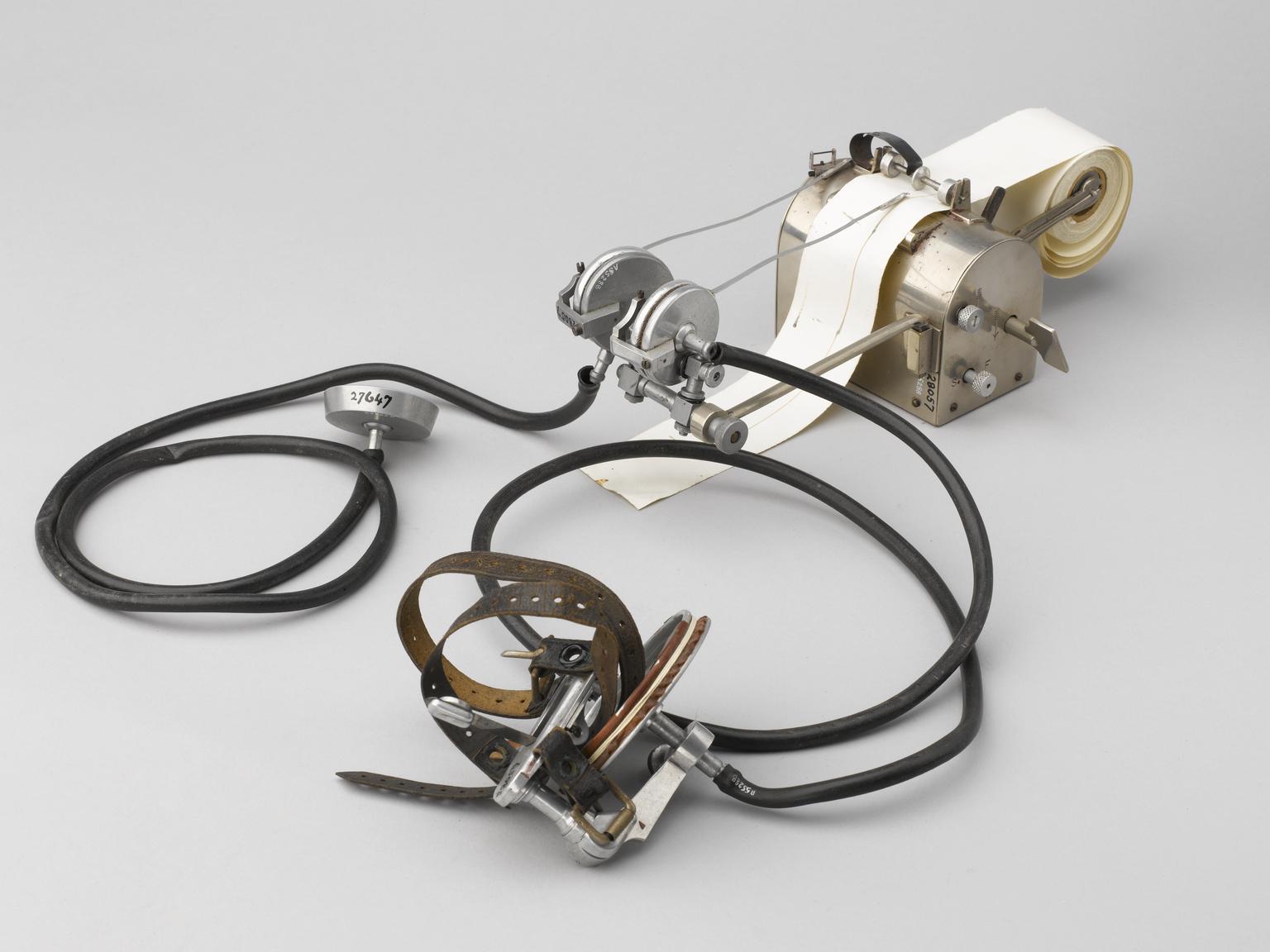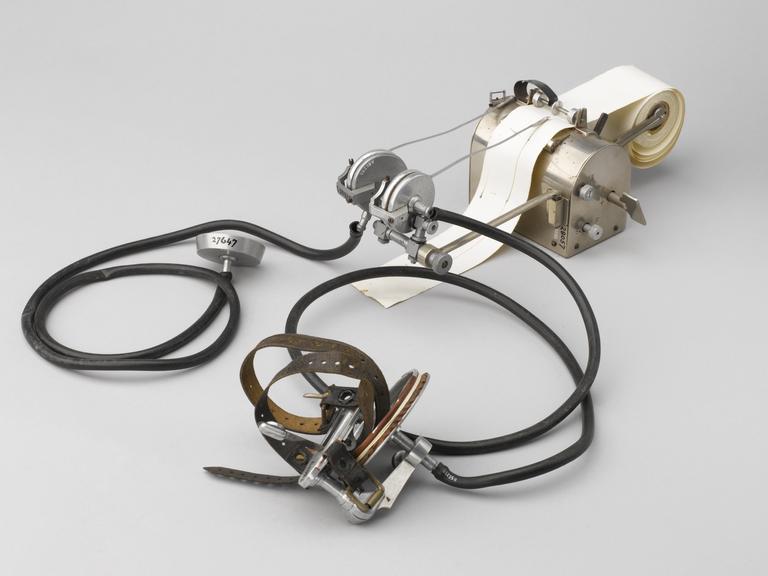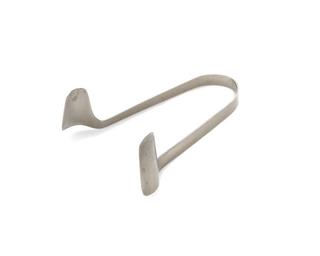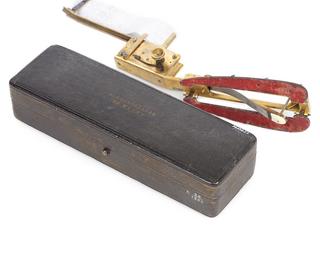
James Mackenzie’s first polygraph, United Kingdom, 1906-1910
Mackenzie's first polygraph, complete
More
British heart surgeon Dr James Mackenzie (1853-1925) developed this ink-writing polygraph in 1906. A tambour (a rubber diaphragm) is placed over a vein in the neck, with while another one is placed on the arterial pulse in the wrist. The movements of these vessels vibrate the diaphragms. These transmit the waves through rubber tubing to two recording arms which record the pulse as continuous lines on paper. It detected problems such as an irregular heartbeat.
Polygraphs were also used as lie detectors. Physiologists found lying could cause physical changes such as a faster heartbeat or increased sweating. Mackenzie’s polygraph measured and recorded these changes.






